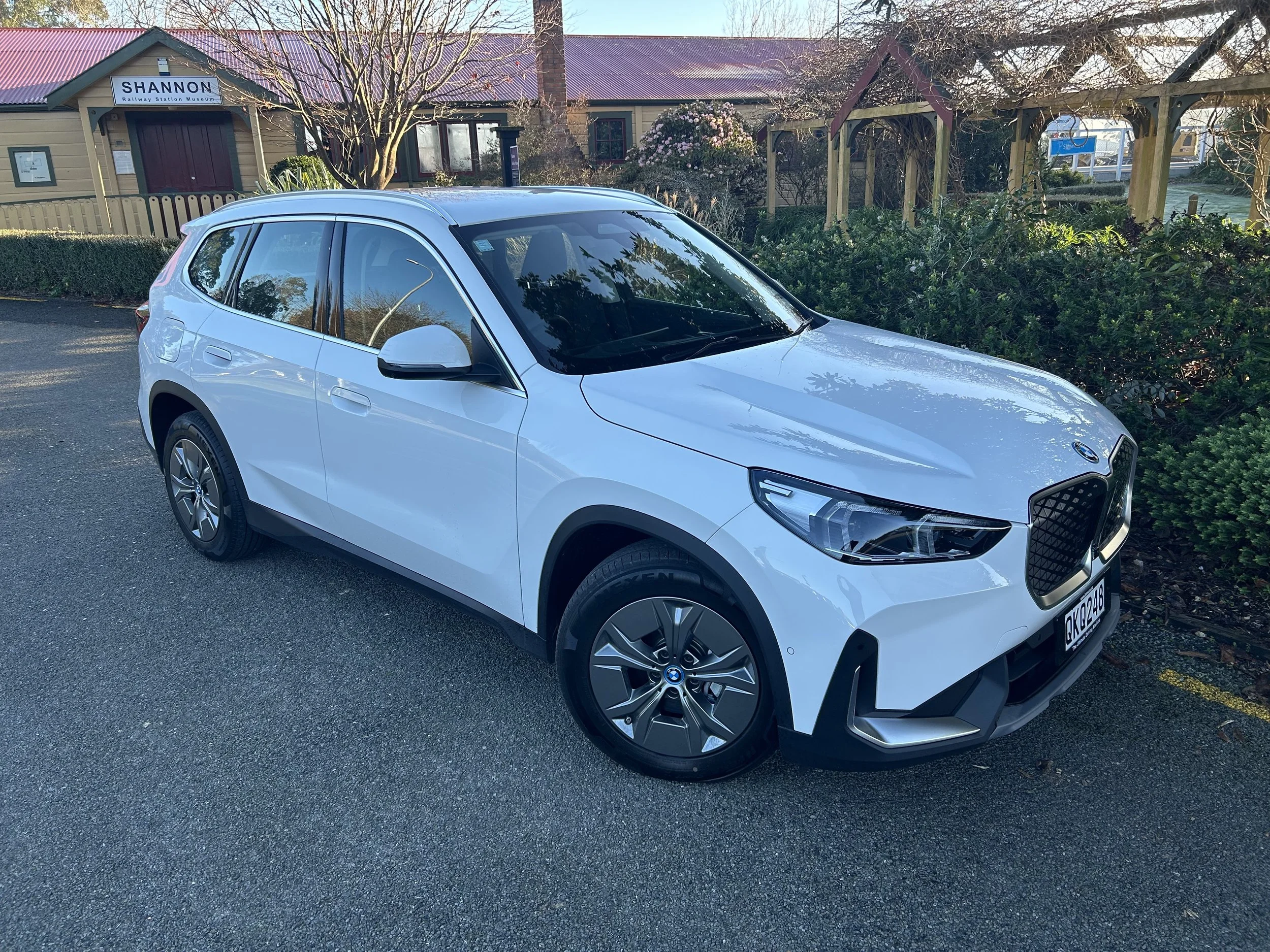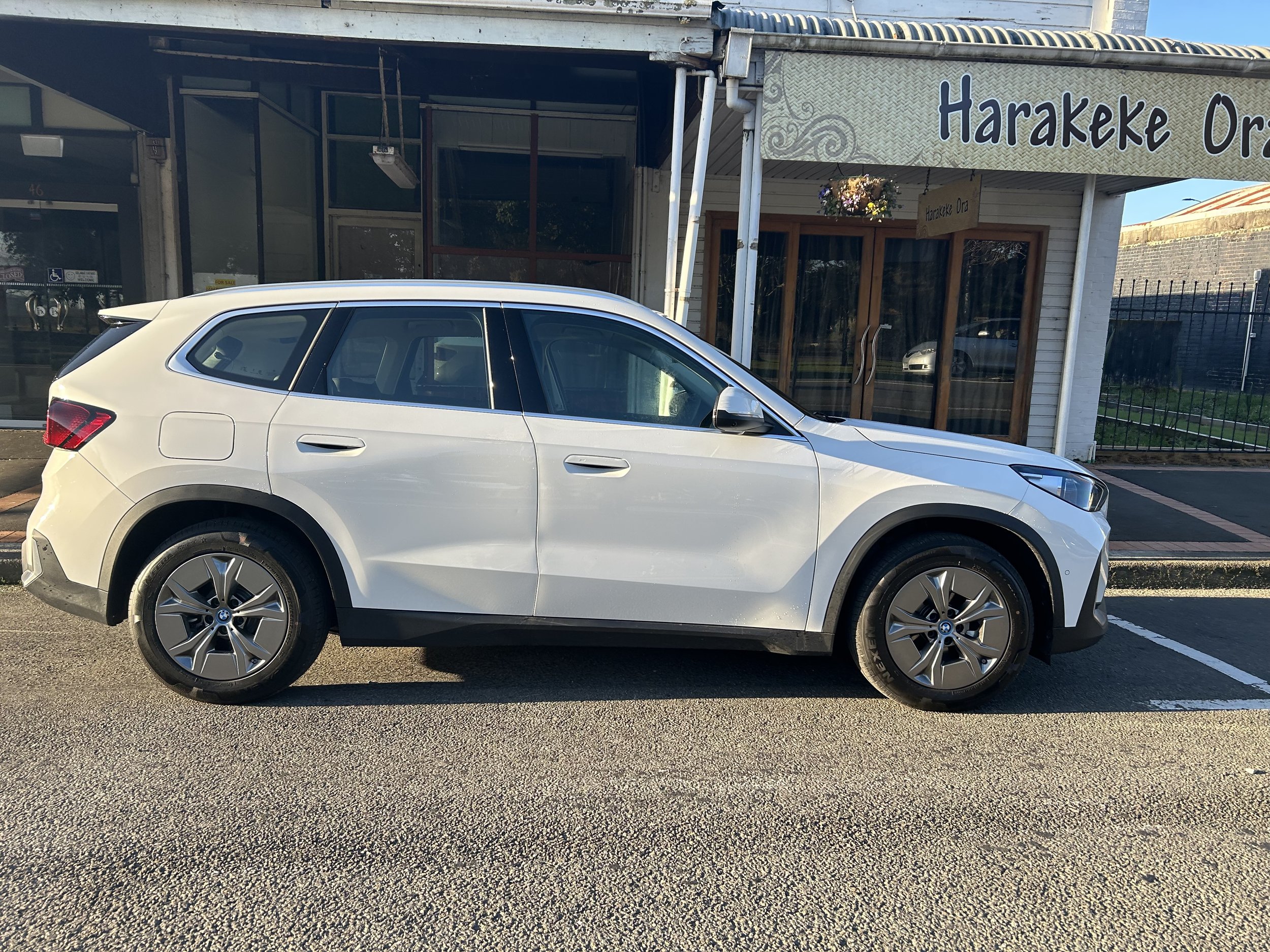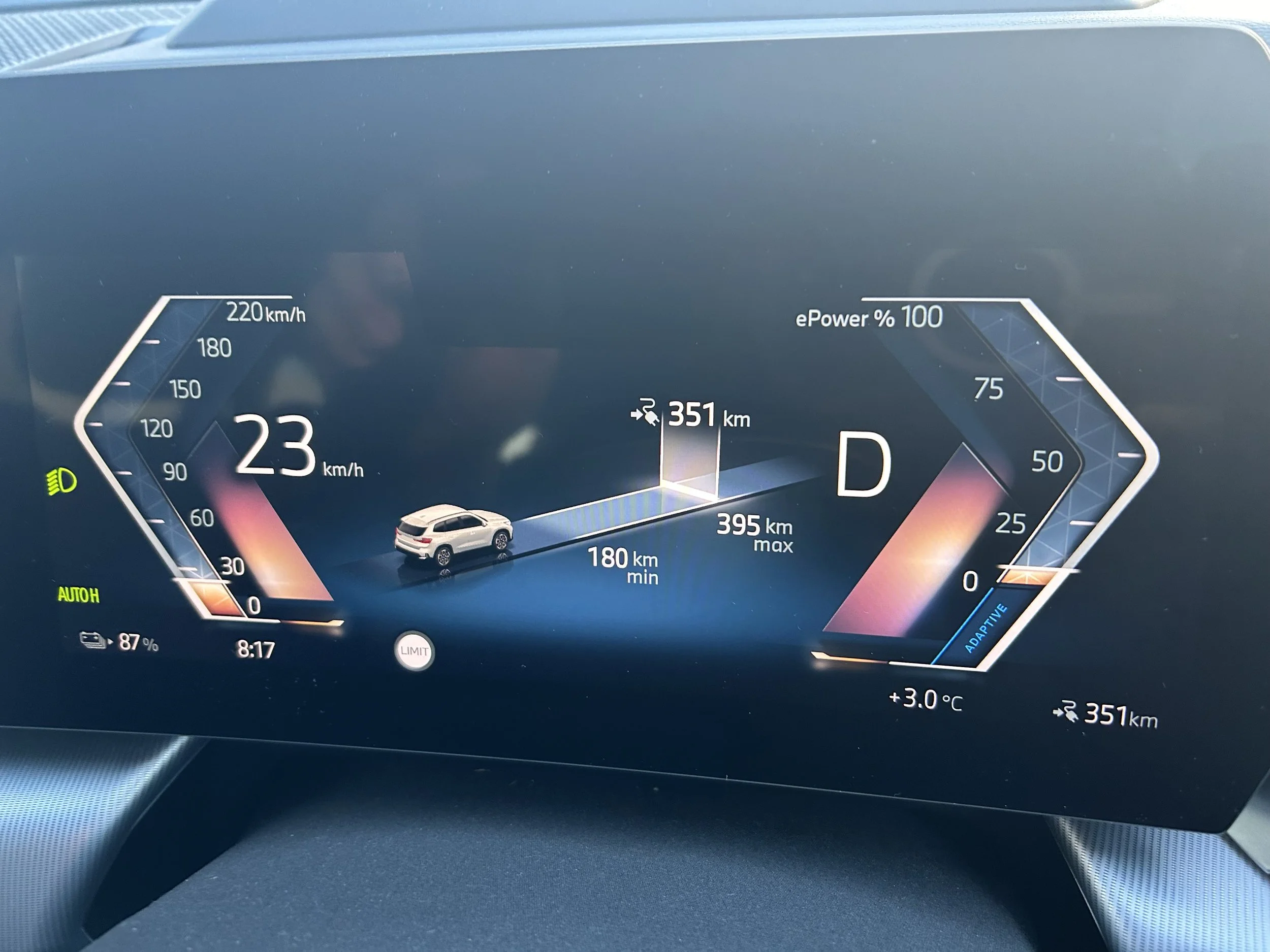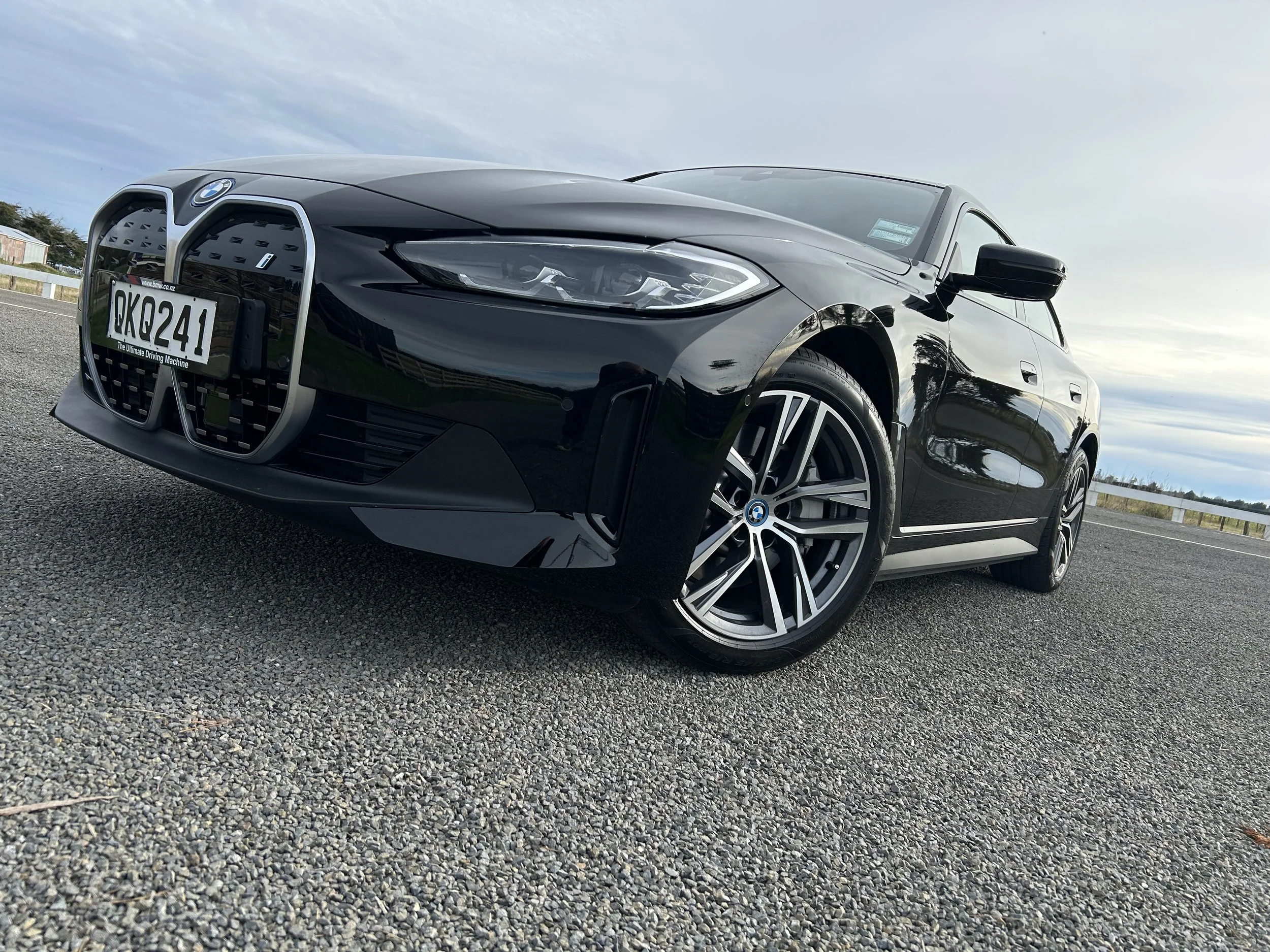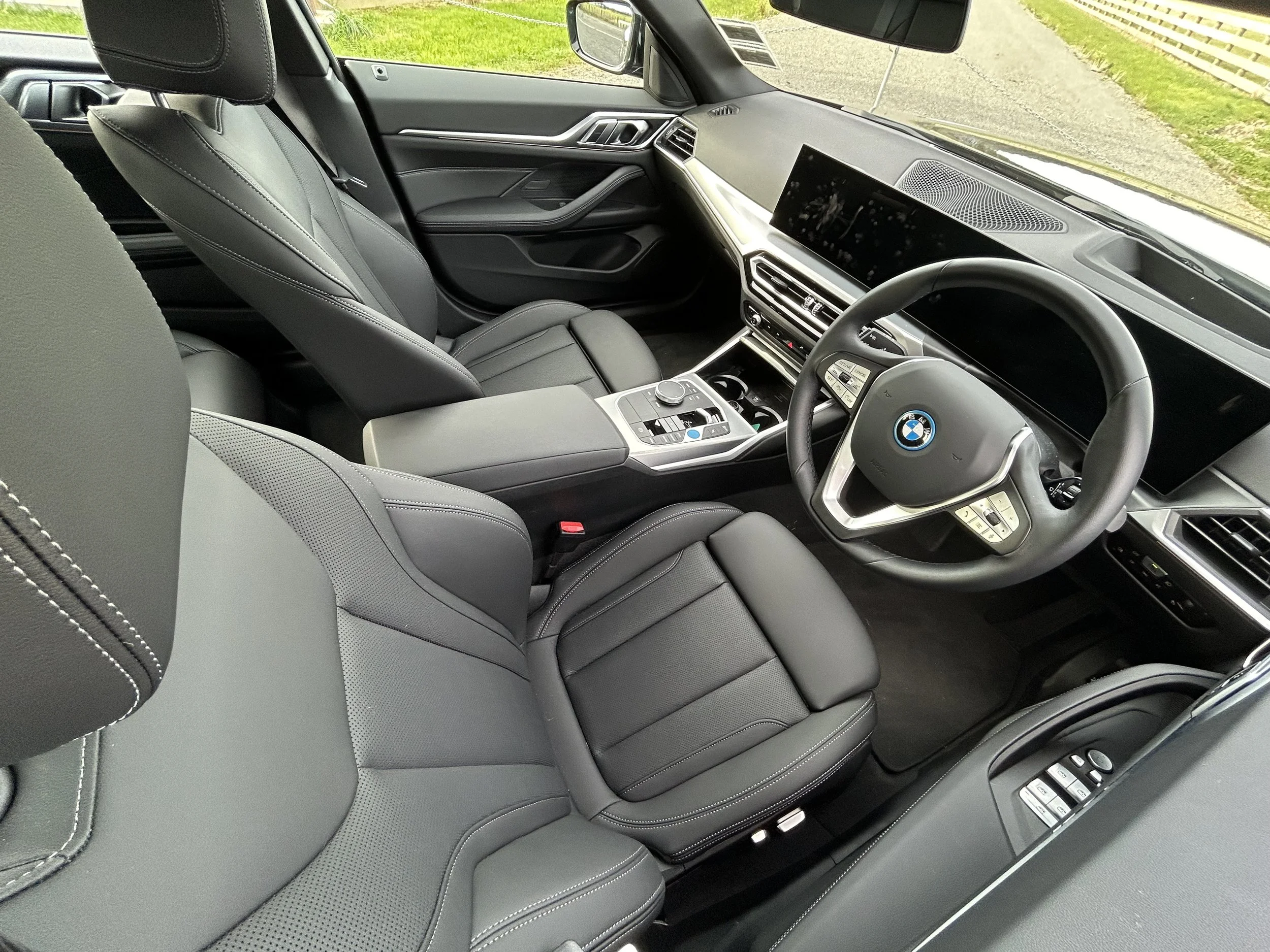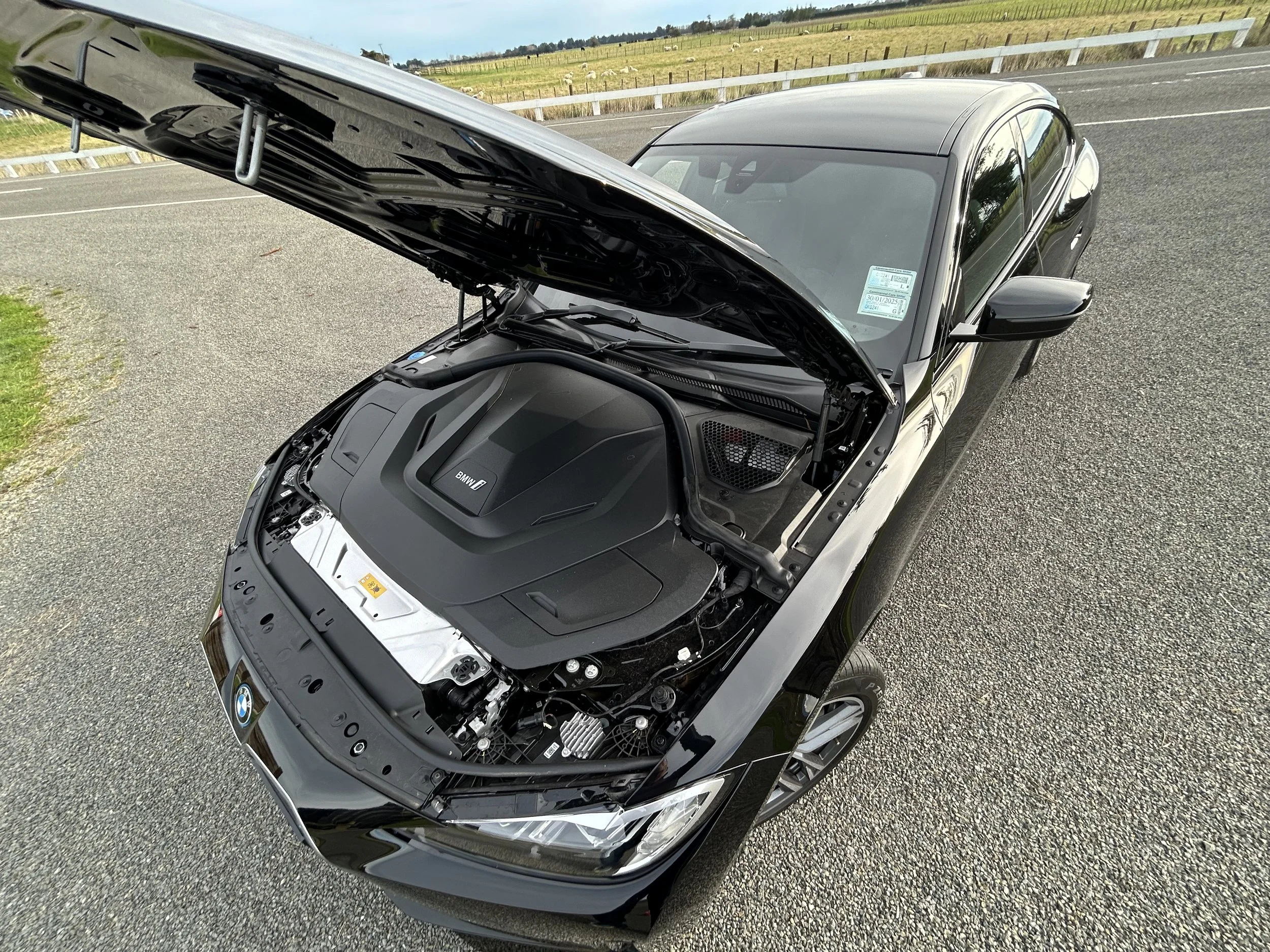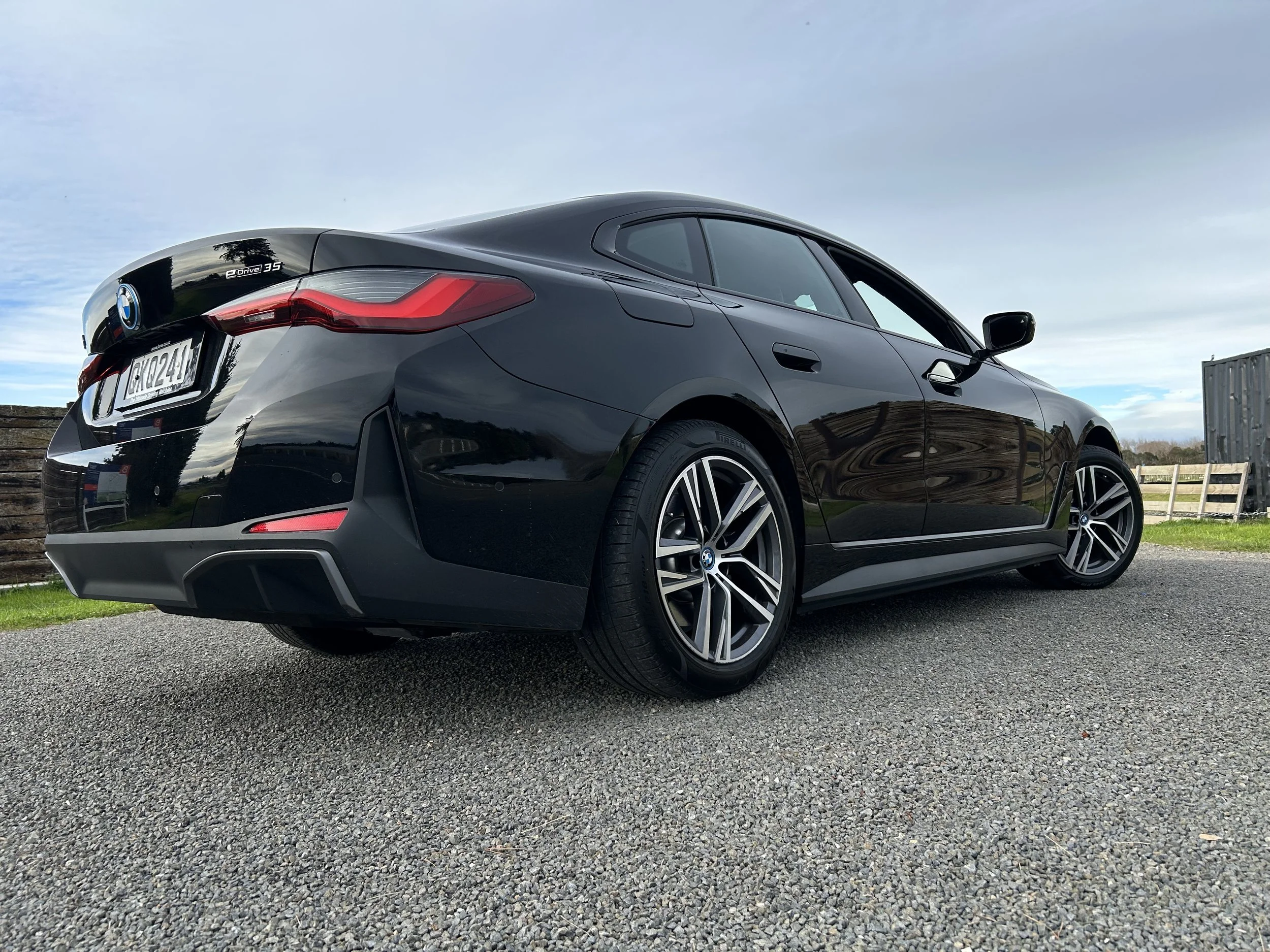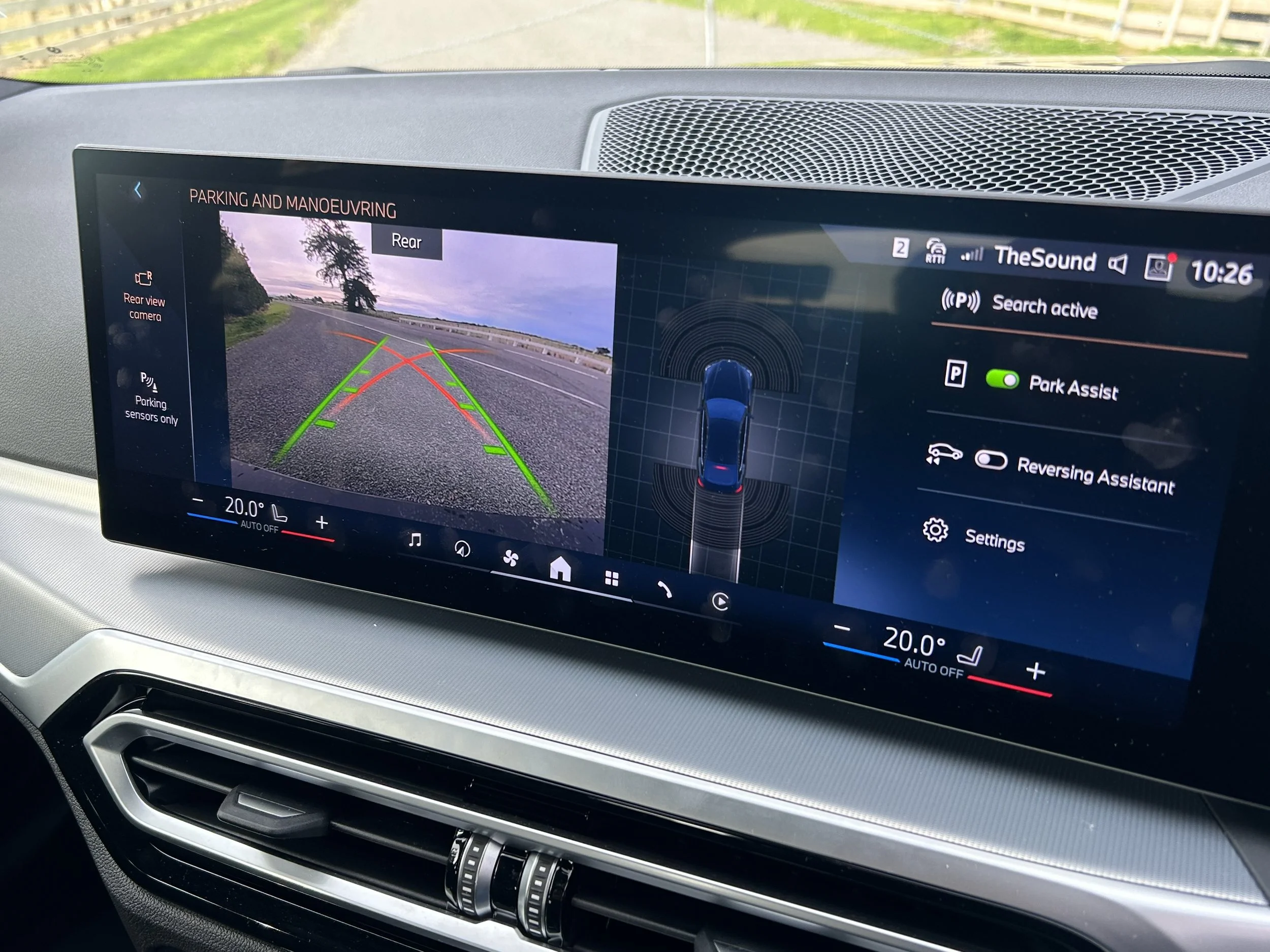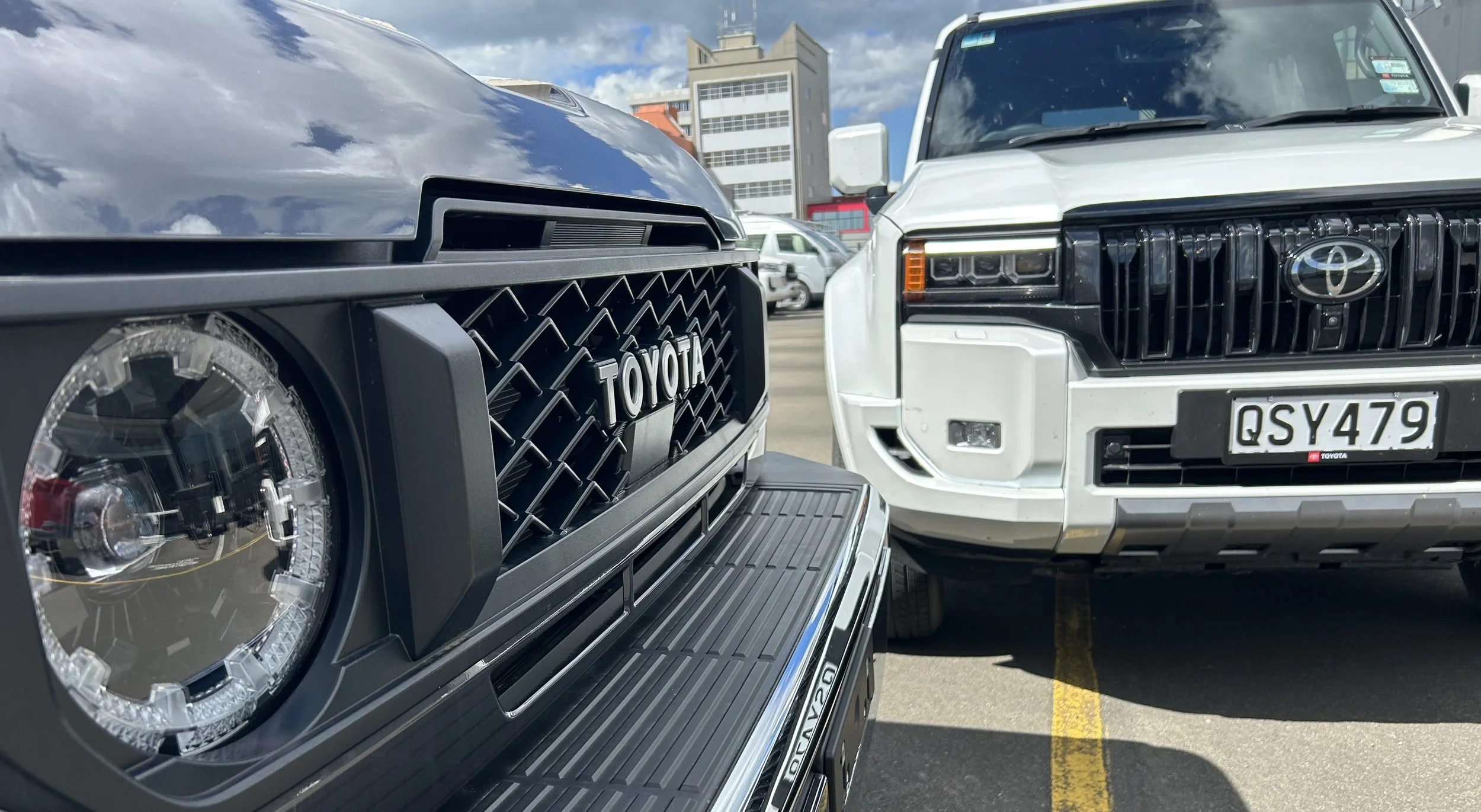BMW iX1 eDrive20/ i4 eDrive35 roadtest review: Battery buddies
/Munich can deliver two sub-$100k electric choices; which will make more sense to your lifestyle?
iX1 eDrive20
Price: $86,900
Powertrain: Single electric motor, front-wheel-drive, 150kW/247Nm, 64.7kWh battery, single speed.
Dimensions: Length, 4500mm; width, 1845mm; height, 2580mm.
We like: Secure road feel; honest performance.
Not so much: Priced above logical rivals; awful ‘eco’ wheels.
i4 eDrive35
Price: $98,900
Powertrain: Single electric motor, rear-wheel-drive, 210kW/400Nm, 67kWh battery, single speed.
Dimensions: Length, 4783mm; width, 1852mm; height, 1448mm.
We like: Well-suited to electric application; easy transition from ICE equivalent.
Not so much: Is BMW’s sole four star ANCAP model.
COMPACT, not too costly and not too far removed, in respect to design and operability, from the cars they’ve known.
In respect to the iX1 eDrive 20, two of those common remits from those looking to divest a fossil fuelled past and dive fully into the electric vehicle pool are fulfilled.
It’s eminently right-sized for city driving and emphatically familiar in feel, being a small car Munich also delivers in combustion form.
How you feel about the price comes down to the badge, obviously.
Even though this model represents as the first rung on the ladder of BMW electric car ownership, it also aims to deliver an elite experience, and for that you pay a premium.
More, in fact, than was first suggested. When announced in late 2023, BMW said it would price this variant for $80,000 Clean Car Discount reward. By the time it arrived, however, that scheme was on rocks. So, too, apparently the pitch for a special factory pricing. As result, rather than being at the $74,300 asked for the first electric BMW sold here, the i3, it sits almost $13k higher.
And that price is for a base package. Options lift it higher.
The dearest extra is a $5500 ‘innovations’ package that adds an alarm, panorama sunroof, harmon kardon hi-fi, a heated steering wheel and electric adjust for the front seat.
There are also XLine and M Sport packages, the latter for $2500 (M Sport wheels, adaptive M suspension, M mesh effect interior trim, M leather steering wheel, M gloss roof rails.
XLine seems to cost the same, and lends 19 inch rims, aluminium roof rails and exterior highlights.
Metallic paints are generally $1800, though the matt ‘frozen grey’ finish is $5500. You can larger rims to the base package, again for a price.
Even before considering any of that, it is patent that, were you to simply measure this car on strength of its technology and size fundamentals, it becomes extremely obvious others can deliver more, for less.
That’s particularly true of the country we identify as most committed to re-setting consumer spending expectations on EV outlay.
Some of China’s own home brands have technically comparable alternates for way cheaper, but more than Chinese cars come from China. Tesla makes NZ-market EVs there; so too a a small tribe of Europeans, BMW included. The electric X3 being out Shanghai.
In respect to the iX1 eDrive20’s Euro-alternate, I’d be thinking Volvo. Zhangjiakou is an un-Nordic location, but the Sino-sourced Volvo EX30 created in partnership with Geely there is characterfully 100 percent Swede. For $2000 less than a iX1 eDrive20 in base form, the priciest EX30 Ultra has more comforts and, with two motors to BMW’s one, a heap more power and torque. Personally, I’d find it hard to give the Sino-Scandi model the flick.
The BMW still has merit, in that it’s a smarter car than it looks and has the performance and handling to make the switch from ICE to electric easy for long-standing BMW customers.
There’s no shortage of empirical evidence to show that when it comes to daily use, most EVs of any size are not ever clocking up trips that come remotely close to running on empty.
All the same, you’ll naturally counter with thought that small cars with smallish batteries will stand risk of raising performance and range anxieties.
That might be so for early issue used import Nissan Leafs, but technology has come a long way in a short time. BMW assures this car’s high-voltage 64.78 kWh (usable) battery not only generates plenty of power for its front axle mounted 150kW/250Nm electric motor, but thanks to the fifth generation BMW eDrive technology, has the smarts to eke out up to 465 kilometres’ range.
That’s pretty substantial for this size of car and reality is your driving style and environment will still have a lot to do with how optimistic the brand is in its claims.
What is evident is that it is being under-utilised if simply restricted to an urban role. This being the front-drive model means the sports activity side of its genre will ultimately need containing, yet it is up to more than just shopping centre adventures, that’s for sure.
A week’s worth of involvement took the test example well beyond the urban driving routine that might very likely be it’s lot with many owners.
It clocked just over 400kms’ and that did pretty much work through the energy store. Even so, the visit to a fast charger after a brisk 90 minute country run mid-way through that mileage was not really precautionary; there was enough range showing for me to make my home.
But I wanted an opportunity to check out how the replenishment side of things works out with a decent commercial charger. (Answer: Pretty well, the charging port’s location on the right rear flank is sensible and the battery revives quickly).
Overall, though, it evidences strongly of having enough range to pretty much get you through sustained periods of commuting, shopping runs and other regular journeys.
The open road experience was a good insight into the engineering talent that BMW brings to its cars.
Small vehicles are not always the best choices for highway use, and small electrics run risk of being double-tarred on that score.
The Mini-shared UKL2 underpinning is arguably not an ingredient that best evidences BMW’s famed ‘ultimate driving machine’ characteristics, but what can be said is that iX1 in battery form largely has the same driving manners as the ICE editions I’ve previously tried.
The battery’s under floor proximity was not too much of a challenge as the platform was always designed for this eventuality.
The EV editions being heavier than the ICE alternates isn’t too much of a burden; the obviously increased weight from having a large battery pack beneath the floor has an effect on how it copes with press-on driving, but you could argue that BMW never really imagined this version would be designed for that level of interaction, anyway.
When you do rag it, overall it’s no bad thing. For sure, you do start to sense the tyres and suspension are given more of a workout than would be the case with the ICE editions, but it has a secure feel.
The plus from it having so much weight set so low is that it is not only a very well-planted car; but the ride is very resolved, too, less ruffled by ruts and other imperfections than the lighter ICE fare.
Dial it back a bit and, with the electric motor largely operating in silence, there’s an appreciable calmness to how it behaves. Operating outside of the Spirt mode improves the economy and also calms the default regenerative braking calibration. In the ultimate zip setting, when you let go of the throttle at pace, the region can be too involved.
Take it easy, however, and it becomes a relaxed and quiet car. For instance, I’d say there’s every likelihood anyone driving the electric iX1 will have the sound system set at a lower volume than in the fossil fuelled types, because there’s less competing extraneous noise from the wind, surfaces and tyres.
In respect to going quietly - well, that also reflects on the amount of performance is availed.
The base drivetrain has decent pull and cruises well, but if it’s outright sappy zip you’re after, then the somewhat pricier dual motor iX1 xDrive30 is the one. As the ‘x’ designation reminds, it is dual motor, which not only means all-wheel-drive but also 80kW and 244Nm extra oomph. BMW’s own timepieces attest that the base iX1 has an 8.6-second 0-100kmh time and the xDrive30 will do the same sprint in 5.7 seconds.
Where both come down to being equals is during replenishment. Charging rates are the same for both versions with up to 130kW for a 10 to 80 percent top-up in 29 minutes - or enough to add 120kms’ range in just 10 minutes. The battery can also be pre-heated manually, allowing users to prepare their car and maximise the possible charging rates at public points.AC charging at up to 11kW is standard for a full recharge time of six and a half hours.
Though it doesn’t quite contain to purely shades of grey, explosively strong colour hues are not a thing in this car. also evident here is that BMW air of quiet, stylish minimalism. It lives up to the premium billing, with a real sense of quality.
The slickness of the infotainment and other tech and the precision with which it is all put together help explain the brand’s status. Less so some of the materials; the front-drive car going cloth rather than leather is fine by me, but it does miss out of a few other features you might expect at this price; heated seats for one.
It’s ultimately a compact car and you need to accept that, but there’s plenty of light and acceptable rear leg room and boot space for an entry-level SUV.
Those wanting more will need to pay more for the iX3, which ostensibly isn’t that much larger in every respect, but has a 202mm longer wheelbase; a difference you’ll mainly notice in the back; though mainly in respect to better lower leg space for rear seat occupants as going bigger brings just 20 litres more luggage capacity. Calling the iX1 a five seater isn’t a stretch, as the almost completely flat ‘transmission’ hump means the middle person isn’t as compromised for foot space as would be the case in a like-sized rear-drive petrol model.
Specification-wise, the iX1 eDrive20 delivers less affluence than the there are plenty of nifty storage options up front. Clever touches include a wallet-like clip to hold your smartphone in place.
BMW’s own infotainment system and screen have always been among the best, and the built-in navigation system is one of a handful that are a decent alternative to Apple CarPlay’s maps app. The large rotary knob for controlling the iDrive tech system having gone is an interesting development. It took up room, yes, but was also an effective means of interacting with the various systems without taking your eyes off the road. so you do get BMW’s smart curved screen with clickable windows for everything from media to weather, via the OS9 operating system.
BMW has done well with electric cars here and, though the climate for them has definitely chilled in 2024, the iX1 eDrive20 cannot harm a penetration push that has seen one in five vehicles sold from the brand powered by electricity.
If it doesn’t suit, there’s another sub-$100,000 option in form of the entry i4 eDrive35, which arranges a more passenger car-familiar setting.
This was a second time around with the i4, but this latest variant is quite a different car to the M50 driven previously.
As an entry choice, the ’35' is a rear drive car running a 210kW/400Nm single motor drivetrain fed by an 66kWh battery lending up to 590 kilometres’ range (under WLTP assessment), whereas the M50 with a 84kWh battery, is dual motor with 400kW/795Nm and 510kms range. The latter’s technical development also comes with a higher specification, and everything reflects in pricing, the M50 carrying a $45,200 premium over this edition. There’s also a i4 eDrive40, which is also rear-drive, but has 40kW/50Nm more than the test car, picks up the 84kWh battery and, again, also delivers a slightly stronger trim and equipment level.
Conceivably, the ’40’ straight away seems to be the one you’d go to for ‘best of both’ worlds flavour, but if you don’t want to go into six figure territory, the eDrive35 deserves to cop attention (sorry, but a pun to identify it’s the car NZ Police have also trialled for general patrol use cannot be passed over).
The ’35’ trim is clearly not the most affluent BMW can throw toward its customers, but the car is not exactly bare-boned either; you still get the full-width LCD screen will all its primary functionalities, for one. Screen-based technologies can be controversial, but at heart BMW’s operating system remains familiar from existing BMWs, so it won’t take you too long to adapt.
A surprise turn-up was the tyre size and choice; not only is it on meaty 18-inch 255/45 rubber, but they’re not exactly from the bargain bin, being Pirelli P-Zeros. The alloy rim is a nice design too; much more preferable in my eyes to the iX1’s awful aero-finished type. These things remind that, even when trimmed to a lower spending level, the i4 remains a premium product.
And a sporty one? The i4 uses the same basic platform as the 3 Series, which has good cred as a decent driver’s car, but the basis for this model is the 4 Series Gran Coupe, which has a more interesting, some would say more divisive, look. Those in a positive frame of mind would say it is the sleeker alternate.
The added practicality of four passenger doors and a hatchback tailgate rather than an orthodox boot works well, all the same. The luggage zone is officially 10 litres smaller than the 3 Series (at 470 litres), but the overall space might prove more usable. The rear seats individually fold for extra flexibility.
In practical terms to its credit BMW has also been able to integrate the battery and drive systems into the body without too much intrusion into interior space.
One retained structural ingredient from the donor ICE cars’ is that transmission tunnel, which means anyone sitting in middle seat will struggle for legroom. So it’s more comfortable for four than it is for five. But those up front are treated to a low-slung and comfortable seating position, while the hatchback boot opening is practical and the space within is decent.
Performance-wise, it obviously hasn’t the shove of the M50, but that’s a seriously potent piece of kit; basically an electric equivalent of the M4. This is more like the old 330i six-cylinder.
The base drivetrain is overall nonetheless highly appealing. Any kind of electric will always provision a nice dollop of step-off shove. From thereon the pace is more measured, but hardly insufficient. The difference between this powertrain and the ICE engines that BMW has is that, with battery fed power, there are no peaks; everything is just one seamless surge. I’m not saying it is better - if you like a close interaction with a powertrain, it is not, because here there no real way of influencing much. For one, you lack a gearbox. So it’s hands-off on that side of thing.
What’s appealing in this regard is that you don’t need to muck around much with various functions to get the best from it. For instance, some electric cars have all sorts of driver-influenced set-ups to deliver different levels of regeneration.
That’s fine if you have the time and brainpower to fathom what works best for whatever situation you happen to be in. Sometimes that just seems too much of a faff, so you end up in s position when potential ways to enhance the range go begging.
No here. With BMW, there’s no need to meddle. Here the machine works for the man; the neat integration of automatic regeneration into the assisted driving is a smart aspect I quite appreciated.
The driving feel is pretty laidback, it’s been engineered to feel less aggressive and more relaxed than the M50, so it’s more comfortable when you just want to cruise. Don't think it lacks a sense of purpose, but you do need to accept that the electric involvement means the i4 is a lot heavier and the power-to-weight is less overwhelming here.
It does drive with assurance, all the same. As with the iX1, because the batteries are low in the car it makes it feel more stable through the corners, while self-levelling air suspension on the rear does its best to counteract the ‘squat’ under power and extra kilos. There’s a lot of grip and it also feels precise enough even in the softest suspension mode, which also gives it an uncanny ability to soak up bumps. I think fans of BMW’s traditional sporting sedans will appreciate it if they’re broadminded enough to appreciate it cannot be quite the same thing they’re used to.
The silence of electric power is also very relaxing, though you can choose to make it more exciting if you choose to go with the sound effects created for BMW by Hollywood composer Hans Zimmer.
You’re going to ask which is the better choice? For me, that’s a no-brainer. As much as I appreciate that sport utility shapes are all the go at the moment, if I had the money for either, I’d simply spend the relatively modest premium that is required to slip into the i4. It’s arguably the car that conforms less to the moment, styling-wise, but nonetheless still delivers a better overall experience.

